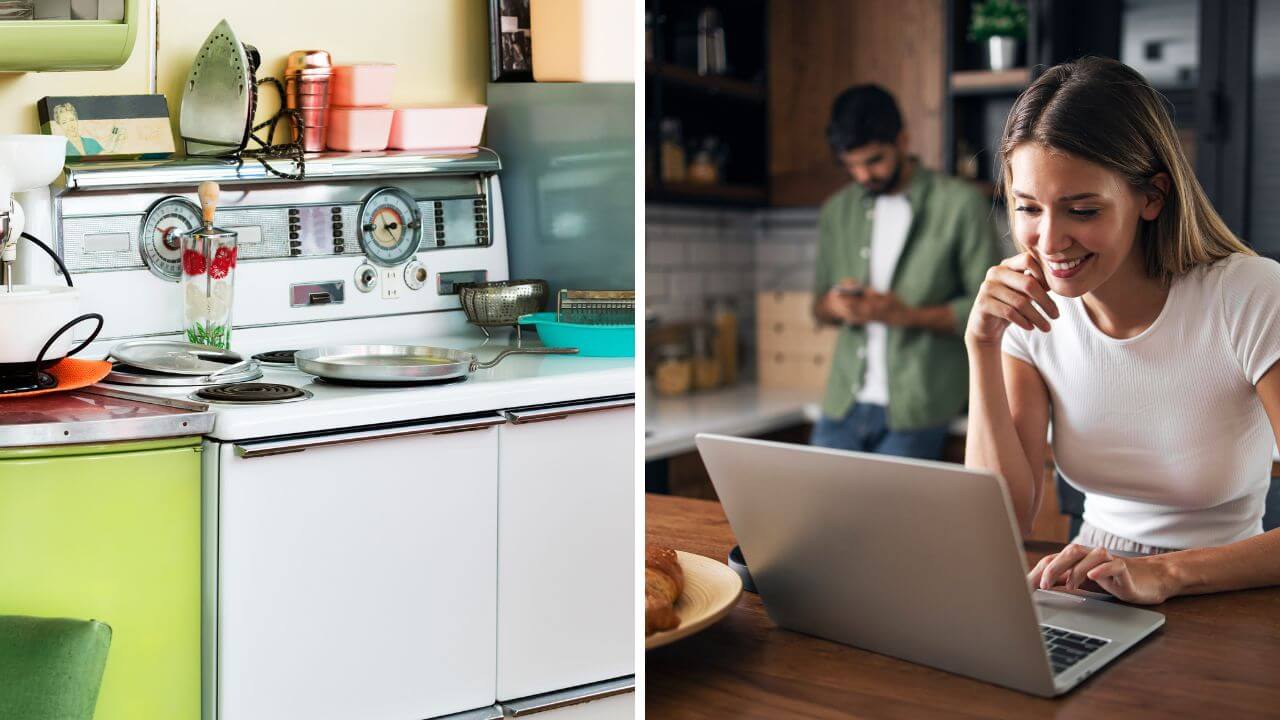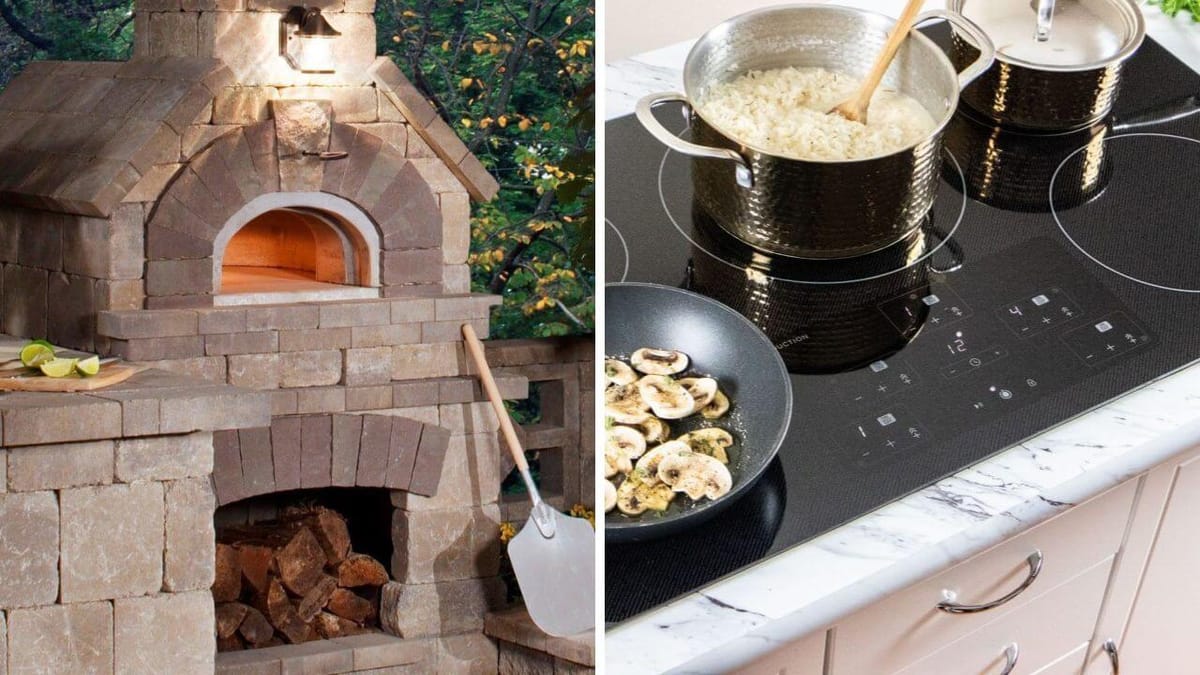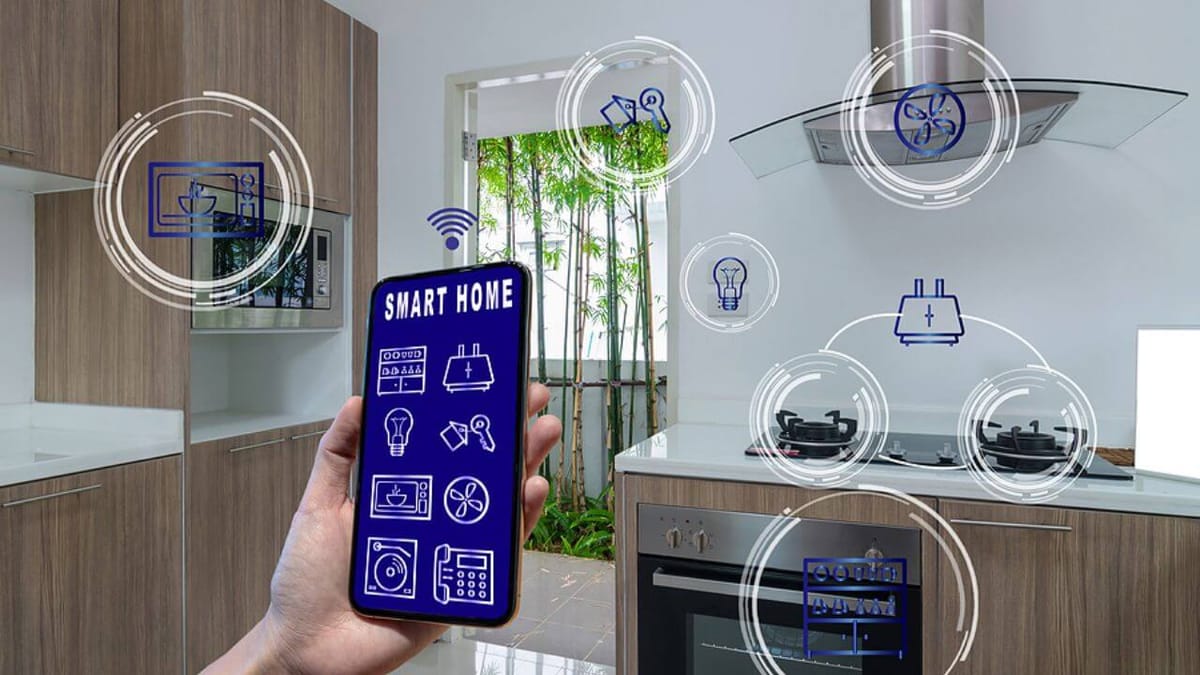A Journey Through Time: How Kitchens Have Transformed from the 1800s to Today
Discover the fascinating evolution of kitchens from the 1800s to today. Explore how design, technology, and culture have transformed this space!

Key Takeaways:
- Kitchens have evolved from simple, utilitarian spaces to multifunctional hubs of the home.
- Technological advancements have significantly influenced kitchen design and functionality.
- Modern kitchens emphasize efficiency, aesthetics, and sustainability.



The Humble Beginnings: Kitchens in the 1800s
In the 1800s, kitchens were far from the sleek, modern spaces we know today. They were often separate from the main living areas, primarily to keep the heat and smells of cooking away from the rest of the house. These kitchens were utilitarian, with a focus on functionality over aesthetics. The hearth was the heart of the kitchen, serving as the primary source of heat for cooking and warmth.
Cooking in the 1800s was labor-intensive, requiring significant time and effort. Everything was manual because there were no electric appliances. The kitchen was equipped with basic tools like cast iron pots, wooden spoons, and stoneware. The introduction of the cast iron stove in the mid-1800s was a game-changer, making cooking more efficient and less reliant on open flames.
The Early 1900s: The Birth of Modern Kitchens
The early 1900s marked the beginning of significant changes in kitchen design and functionality. The advent of gas and electric stoves revolutionized cooking, making it faster and more efficient. Kitchens began to be integrated into the main living areas of homes, reflecting a shift in their role within the household.
During this period, the concept of the "work triangle" emerged, emphasizing the importance of efficient kitchen layouts. This design principle focused on the optimal placement of the sink, stove, and refrigerator to minimize movement and maximize efficiency. The early 1900s also saw the introduction of built-in cabinetry, which helped to organize kitchen tools and ingredients more effectively.
The Mid-20th Century: The Rise of the Modern Kitchen



Due to technological advancements and shifting lifestyles, kitchen design underwent a significant transformation in the middle of the 20th century. The post-World War II era saw a boom in suburban living, with kitchens becoming central to family life. The introduction of new appliances like refrigerators, dishwashers, and microwaves made cooking and cleaning more convenient.
Kitchens in the mid-20th century were designed with a focus on efficiency and convenience. Open floor plans became popular, allowing for better interaction between the kitchen and other living spaces. This period also saw the rise of colorful, stylish kitchens, with bold colors and innovative materials like Formica and stainless steel becoming popular choices for countertops and cabinetry.
The 1970s and 1980s: The Era of Innovation
There was a wave of innovation in kitchen design and technology during the 1970s and 1980s. The introduction of new materials and appliances continued to transform the kitchen into a multifunctional space. The microwave oven became a staple in most households, revolutionizing the way people cooked and reheated food.
During this era, kitchens began to reflect personal style and taste more than ever before. Custom cabinetry, unique countertops, and a variety of color schemes allowed homeowners to create kitchens that were both functional and aesthetically pleasing. The open floor plan concept continued to gain popularity, further integrating the kitchen into the overall living space.
The 1990s: The Rise of the Gourmet Kitchen
A growing interest in cooking and hosting parties at home led to the emergence of the gourmet kitchen in the 1990s. High-end appliances, such as professional-grade stoves and refrigerators, became more accessible to the average homeowner. Kitchens were designed to accommodate multiple cooks, with ample counter space and storage.
This period also saw a shift towards more natural materials, with granite and marble countertops becoming popular choices. The focus on quality and craftsmanship was evident in the design and construction of kitchen cabinetry and fixtures. The 1990s marked a return to traditional styles, with a modern twist, blending classic design elements with contemporary functionality.
The 2000s: The Age of Technology
The 2000s ushered in an era of technological advancements that continued to shape the modern kitchen. Smart appliances, such as refrigerators with touchscreens and ovens with Wi-Fi connectivity, have become increasingly common. These innovations made cooking and meal planning more convenient and efficient.
Kitchens in the 2000s were designed with a focus on sustainability and energy efficiency. Eco-friendly materials, such as bamboo and recycled glass, became popular choices for countertops and cabinetry. The open floor plan concept remained popular, with kitchens often serving as the central hub of the home, where families gathered to cook, eat, and socialize.
The 2010s: The Rise of the Smart Kitchen
The 2010s saw the rise of the smart kitchen, with technology playing an even more significant role in kitchen design and functionality. Voice-activated assistants, such as Amazon Alexa and Google Home, allowed homeowners to control their kitchen appliances with simple voice commands. Smart refrigerators, ovens, and dishwashers could be monitored and controlled remotely via smartphone apps.
This decade also saw a growing emphasis on sustainability and eco-friendly design. Energy-efficient appliances, LED lighting, and sustainable materials became standard features in modern kitchens. The focus on health and wellness was reflected in kitchen design, with features like built-in water filtration systems and steam ovens becoming more common.
The 2020s: The Future of Kitchen Design
The kitchen is still changing as we enter the 2020s, thanks to advancements in technology and shifting lifestyles. The COVID-19 pandemic has had a significant impact on kitchen design, with a renewed focus on hygiene and functionality. Touchless faucets, antimicrobial surfaces, and advanced air filtration systems are becoming increasingly popular.
The trend towards open floor plans and multifunctional spaces continues, with kitchens serving as the heart of the home. Smart technology is becoming more integrated, with appliances that can communicate with each other and adapt to the needs of the user. Sustainability remains a key focus, with a growing emphasis on reducing waste and conserving energy.



The Role of Technology in Modern Kitchens
Technology has played a crucial role in the evolution of the kitchen, transforming it from a simple cooking space into a multifunctional hub of the home. Smart appliances, such as refrigerators with built-in cameras and ovens with Wi-Fi connectivity, have made cooking and meal planning more convenient and efficient.
Voice-activated assistants, such as Amazon Alexa and Google Home, have further enhanced the functionality of modern kitchens. Homeowners can control their appliances, set timers, and even order groceries with simple voice commands. The integration of technology has made the kitchen a more connected and efficient space, reflecting the changing needs and lifestyles of today's homeowners.
The Importance of Sustainability in Kitchen Design
Due to a growing awareness of environmental issues and the need to conserve resources, sustainability has become a key focus in contemporary kitchen design. Energy-efficient appliances, such as refrigerators and dishwashers with high Energy Star ratings, help to reduce energy consumption and lower utility bills.
Eco-friendly materials, such as bamboo and recycled glass, are becoming popular choices for countertops and cabinetry. These materials are not only sustainable, but also durable and stylish. The use of LED lighting, water-saving faucets, and advanced air filtration systems further enhances the sustainability of modern kitchens, making them more environmentally friendly and efficient.
Summary
The journey of kitchen design from the 1800s to today reflects significant changes in technology, lifestyle, and aesthetics. From the humble, utilitarian kitchens of the 1800s to the high-tech, sustainable kitchens of the 2020s, the evolution of the kitchen mirrors broader societal trends and advancements. Modern kitchens are not just places to cook but multifunctional spaces that serve as the heart of the home, reflecting the changing needs and preferences of homeowners.
FAQ
How have technological advancements influenced kitchen design?
Technological advancements have significantly influenced kitchen design by introducing smart appliances, voice-activated assistants, and energy-efficient solutions. These innovations have made cooking and meal planning more convenient and efficient, transforming the kitchen into a connected and multifunctional space.
What are some popular sustainable materials used in modern kitchens?
Popular sustainable materials used in modern kitchens include bamboo, recycled glass, and eco-friendly countertops. These materials are not only environmentally friendly but also durable and stylish, contributing to the overall sustainability and efficiency of the kitchen.
How has the COVID-19 pandemic impacted kitchen design?
The COVID-19 pandemic has impacted kitchen design by emphasizing hygiene and functionality. Features like touchless faucets, antimicrobial surfaces, and advanced air filtration systems have become increasingly popular, reflecting the need for cleaner and more efficient kitchen spaces.



